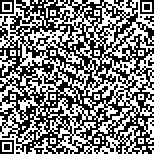| 本文已被:浏览 876次 下载 690次 |

码上扫一扫! |
| 猪瘟基因工程亚单位疫苗(CHO-133D)免疫攻毒后带毒、排毒评价研究 |
| 陈坚,贾宝琴,高洁,赵丽霞,车影,程水生,宋志刚,杜宇荣,李晓艳,岳继恒,狄栋栋,张建华,吴素芳,张强,高日明,闫聪,才学鹏 |
|
|
| (金宇保灵生物药品有限公司;中国兽医药品监测所) |
|
| 摘要: |
| [摘 要] 猪瘟基因工程亚单位疫苗(CHO-133D)为中国仓鼠卵巢细胞(Chinese hamster ovary cells, CHO)表达的E2蛋白加佐剂乳化制成。为评价其免疫攻毒保护效果,同时重点监测攻毒后的带毒、排毒及水平传播情况,将制备的1批猪瘟基因工程亚单位疫苗(CHO-133D),两次免疫接种4~6周龄仔猪,二免后21 d连同对照猪进行猪瘟石门系强毒攻击,另设不免疫不攻毒同居对照组;各组实验猪于攻毒后第0、2、4、6、8、10、12、14、16 d,采集口、鼻、肛拭子及全血进行RT-qPCR检测猪瘟病毒核酸,并于攻毒后16 d剖检所有试验猪,采集各组织器官进行免疫组化检测及组织病毒载量检测。攻毒观察结果表明,免疫组5/5保护,对照组5/5发病并死亡。RT-qPCR结果表明,对照组猪攻毒后口、鼻、肛拭子,及全血均持续检测到明显排毒,各脏器均检出猪瘟病毒;免疫组攻毒后口、鼻、肛拭子均未检测到猪瘟病毒,且攻毒12 d之后全血中猪瘟病毒核酸全部转为阴性,免疫组部分猪扁桃体和淋巴结中检出较低的病毒核酸拷贝数;同居对照组猪,口、鼻、肛拭子及全血、各组织器官中均未检测到猪瘟病毒。免疫组化结果表明,对照组猪各脏器均为阳性,免疫组和同居对照组猪各脏器均为阴性。猪瘟基因工程亚单位疫苗(CHO-133D)对猪只提供良好的免疫保护,猪瘟石门系强毒攻击后免疫猪健活不排毒,有效阻断病毒的水平传播,为今后临床中猪瘟疫病的传播防控提供有效疫苗。 |
| 关键词: 猪瘟 基因工程亚单位疫苗 带毒 排毒 水平传播 |
| DOI: |
| 投稿时间:2024-08-06修订日期:2024-11-07 |
| 基金项目:猪瘟E2 蛋白亚单位疫苗的开发(2021GG0216) |
|
| Efficacy evaluation of subunit vaccine of Classical Swine Fever Virus(CHO-133D)for virus load and shedding after challenge |
|
| (Jinyu Baoling Biological Drugs Co,LTD) |
| Abstract: |
| Abstract: Subunit vaccine of Classical Swine Fever Virus(CHO-133D)was prepared by emulsifying E2 protein expressed in Chinese hamster ovary (CHO) cells with ISA 201 adjuvant. In order to evaluate the efficacy of the subunit vaccine, especially the viral shedding and load,and horizontal transmission post challenge, piglets aged 4~6-weeks were immunized twice at an interval 21 days. The vaccinated and unvaccinated control piglets were challenged with the Shimen strain of CSFV at 21st day after the second vaccination. Concurrently, a sentinel group was established, which was neither vaccinated nor challenged and lived in the same area of vaccinated groups. On the 16th day post-challenge all piglets were euthanized, and dissected tissues and organs were collected. The viral loads were detected using RT-qPCR in the blood samples, as well as in anal swabs, nasal swabs, and oral swabs of all piglets collected in the days 0, 2, 4, 6, 8, 10, 12, 14, and 16 post challenge. Viral load in organs was detected using immunohistochemistry and RT-qPCR methods. Immunized group was 5/5 protected and 5/5 morbidity and mortality was observed in the control group. Virus was detected in all unvaccinated control piglets’ samples for several days after challenged, but not detectable in vaccinated piglets’ oral, nasal, and anal swabs after virus attack, as well as in bloods 12 days after challenge. Virus was also not detected in the samples of liver and kidney but detectable in some tonsil and lymph node samples vaccinated group. No virus was detected in all samples of sentinel group piglets, indicating that no horizontal transmission of the swine fever virus occurred during challenge. The immunohistochemical assay showed that virus was found in all organs of the unvaccinated group, but not in either the vaccinated or sentinel group after the challenge. The genetically engineered subunit CSFV (CHO-133D) vaccine can fully protect experimental pigs from attacks of the Shimen strain of CSFV. It is an effective vaccine for blocking the horizontal spread of the virus and providing a controlling of the swine fever epidemics in future clinical practice. |
| Key words: classical swine fever virus genetic engineering subunit vaccine viral excretion viral load carried the horizontal spread of the virus |